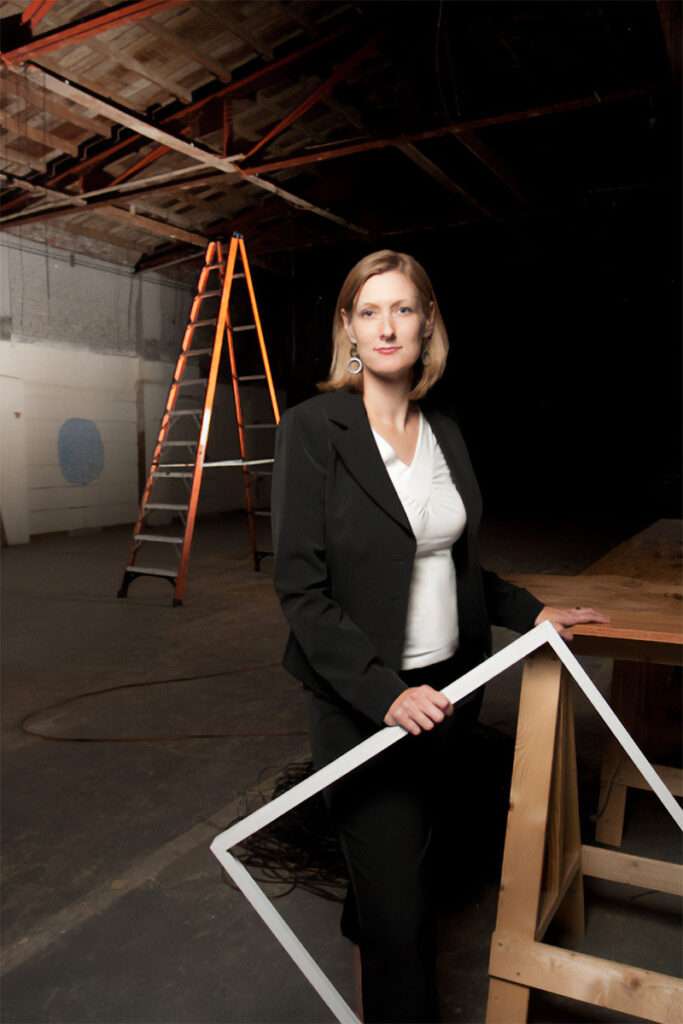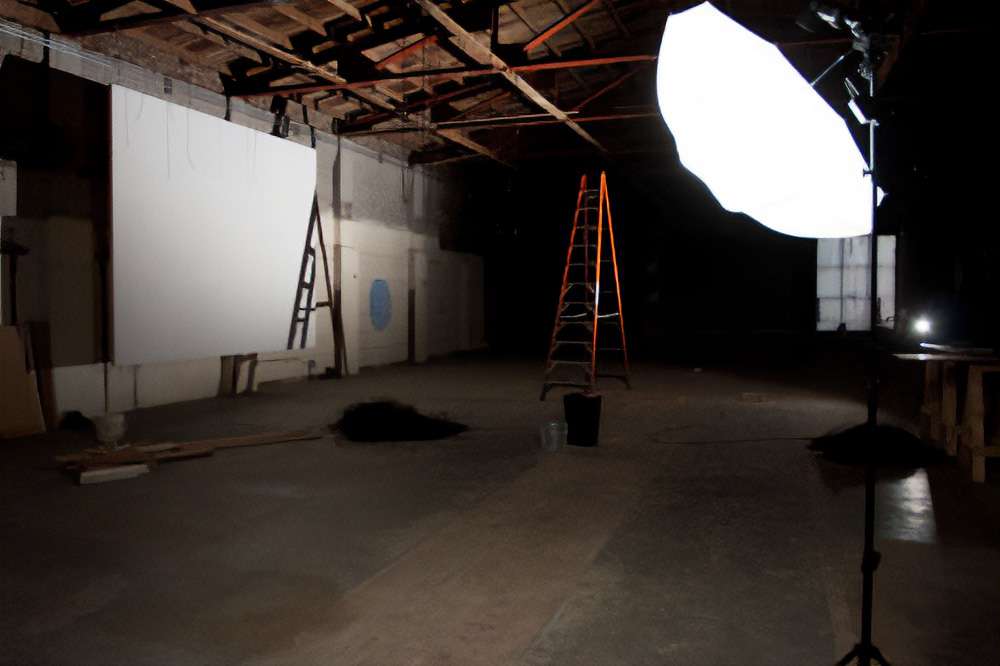Back in the 2000s, when I snapped this photo, my on-location portrait setup was pretty minimal (more on that below). I used to do gigs for a local print magazine in Austin called Rare. They were big on themed issues, where they’d spotlight different folks in the community but tie them together somehow. This time, they wanted everyone to hold a picture frame in their shots, as a loose theme.

One of my subjects was a woman who served as director for an art gallery. There was some construction happening a couple of floors up, so I suggested we try some shots there. It was dimly lit but had this cool vibe, and I figured it could give the editors more options.
I set up one flash (a Canon 580 EX) to fire across the room at this big orange stepladder. For the key light, I used another 580 EX with a simple shoot-through umbrella. Flash trigger/receivers were PocketWizards. Camera-wise, it was probably a 40D.

These shoots for Rare happened all over the place—nightclubs, retail stores, home offices, theaters—and they had to be done quickly but still magazine-quality. The key to pulling these off? Mastering exposure and lighting basics long before taking on gigs. That way, you can tackle any curveballs.
I’ve noticed lots of newcomers diving into jobs without nailing down the basics first. Plus, there’s this growing idea (which I’d call a myth) that if you snap a pic, you can fix anything in editing. Sure, you can salvage a bad shot, but that’s not sustainable for pros. We have to churn out tons of pics per session, have them client-ready, and can’t afford to spend hours fixing stuff we flubbed initially.
My advice? Get solid on exposure, composition, lighting, a bit of posing, and paying attention to detail. Train your eye for what looks good. And don’t head into a shoot thinking you’ll fix it all later with editing.

